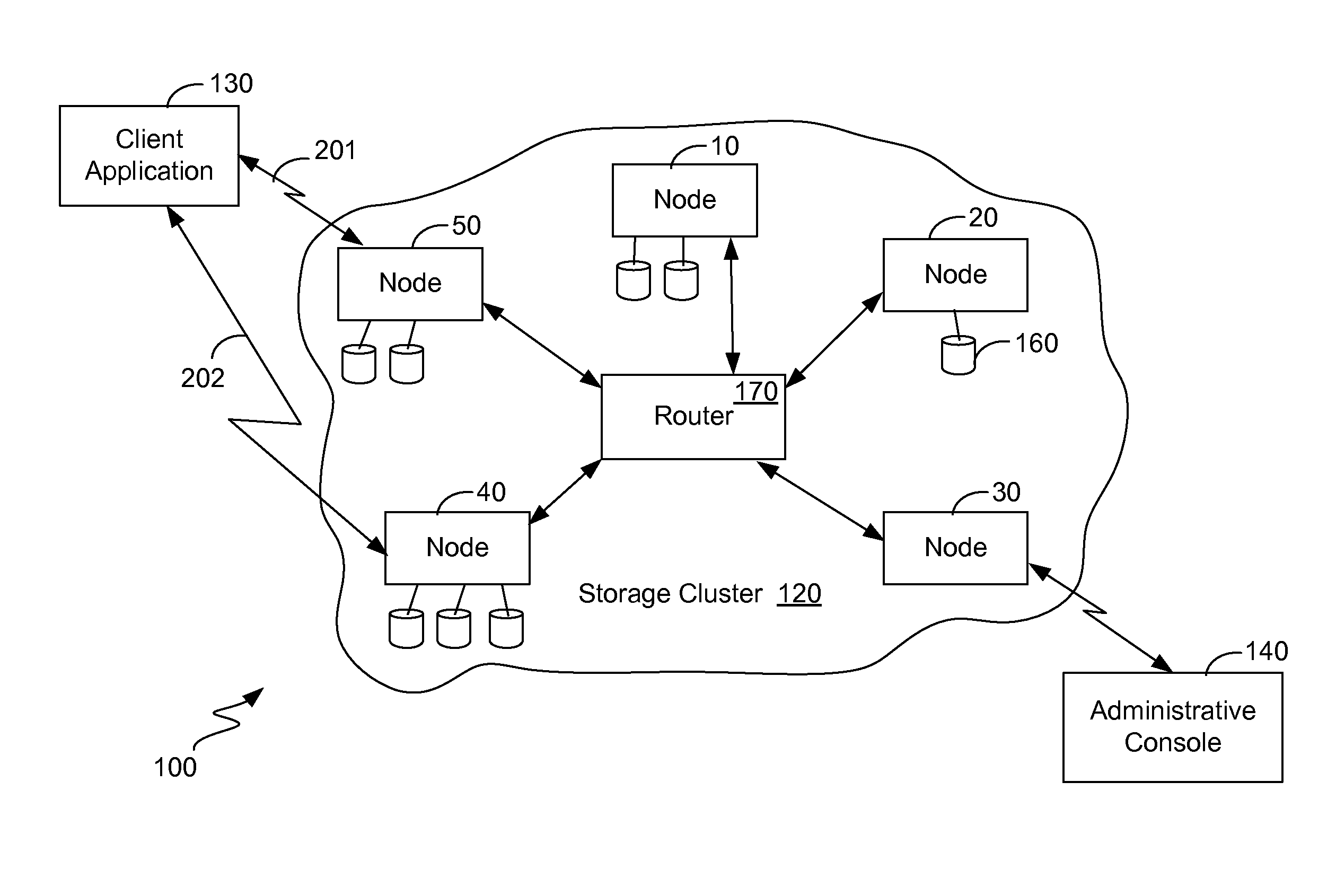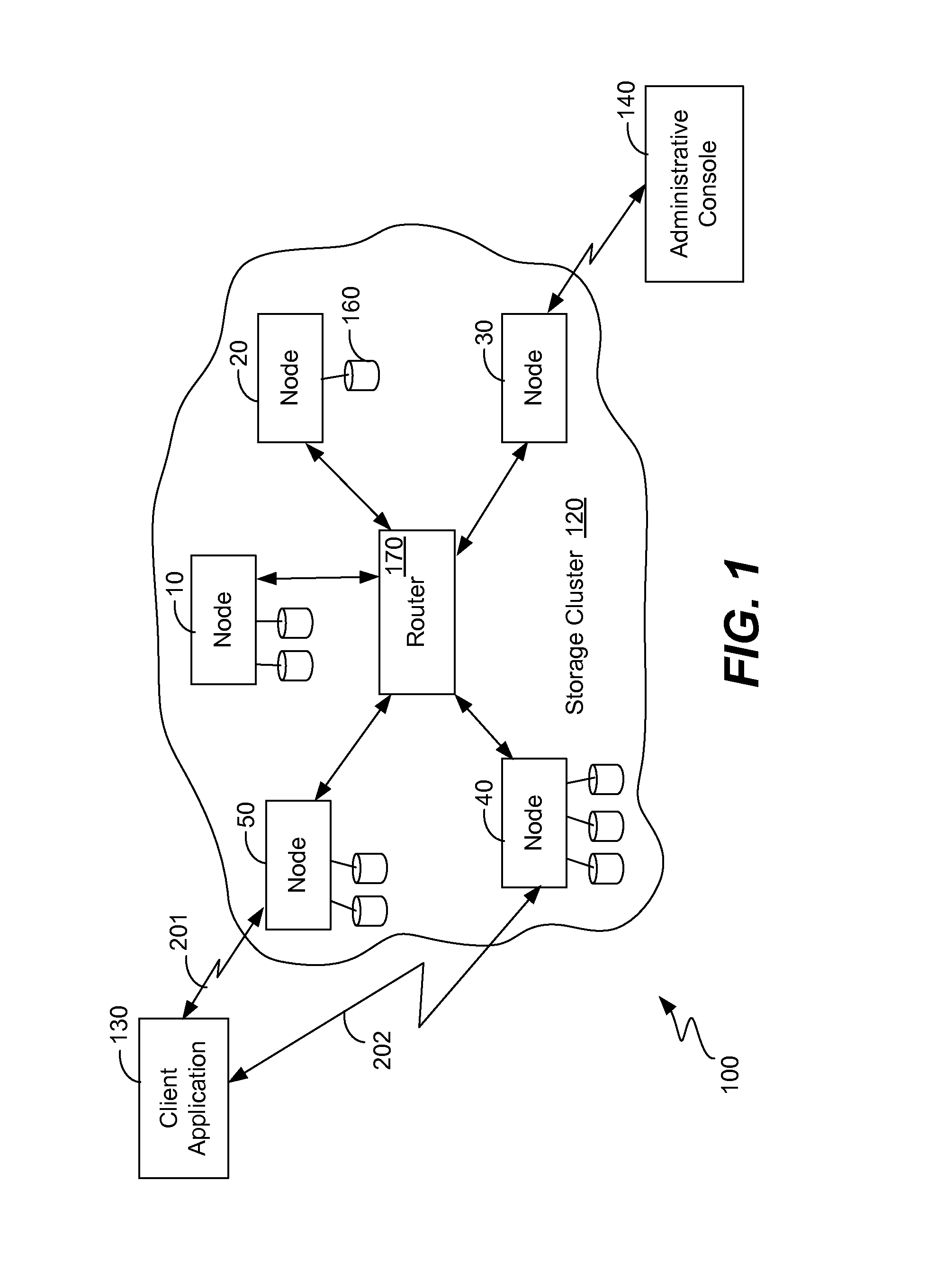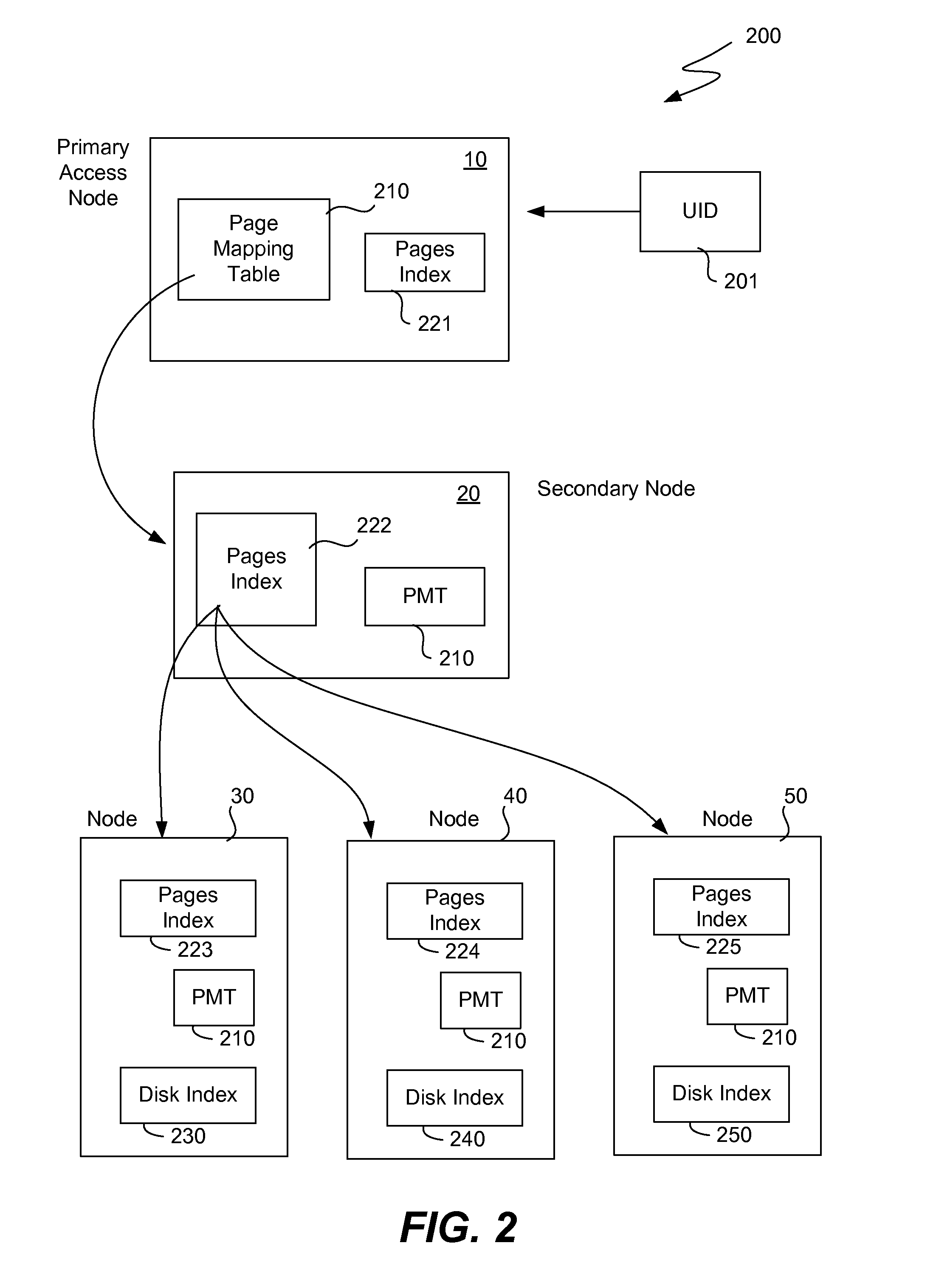Elimination of duplicate objects in storage clusters
a technology of storage clusters and duplicate objects, applied in the field of data storage and retrieval, can solve the problems of consuming cpu time, reaching its limits, and wasting disk spa
- Summary
- Abstract
- Description
- Claims
- Application Information
AI Technical Summary
Benefits of technology
Problems solved by technology
Method used
Image
Examples
Embodiment Construction
[0024]As mentioned above, improvements are desired in the deletion of duplicate objects within a storage cluster. It is realized that many of the data structures and techniques used in the above-mentioned application “Two Level Addressing in Storage Clusters” may also be used in the present invention to detect duplicate objects. More specifically, a hash value to unique identifier table (hash-to-UID table) may be used to keep track of all of the pairs of a hash value and the corresponding unique identifier for all digital objects within the cluster. While this table may potentially be extremely long, it can be distributed amongst the nodes of the storage cluster in the same way that the pages index is distributed in the above-mentioned application. Similarly, a page mapping table (the exact same page mapping table or a similar one) may also be used to map pages of a hash value to the particular node where the hash-to-UID table is located corresponding to that page of the hash value....
PUM
 Login to View More
Login to View More Abstract
Description
Claims
Application Information
 Login to View More
Login to View More - R&D
- Intellectual Property
- Life Sciences
- Materials
- Tech Scout
- Unparalleled Data Quality
- Higher Quality Content
- 60% Fewer Hallucinations
Browse by: Latest US Patents, China's latest patents, Technical Efficacy Thesaurus, Application Domain, Technology Topic, Popular Technical Reports.
© 2025 PatSnap. All rights reserved.Legal|Privacy policy|Modern Slavery Act Transparency Statement|Sitemap|About US| Contact US: help@patsnap.com



